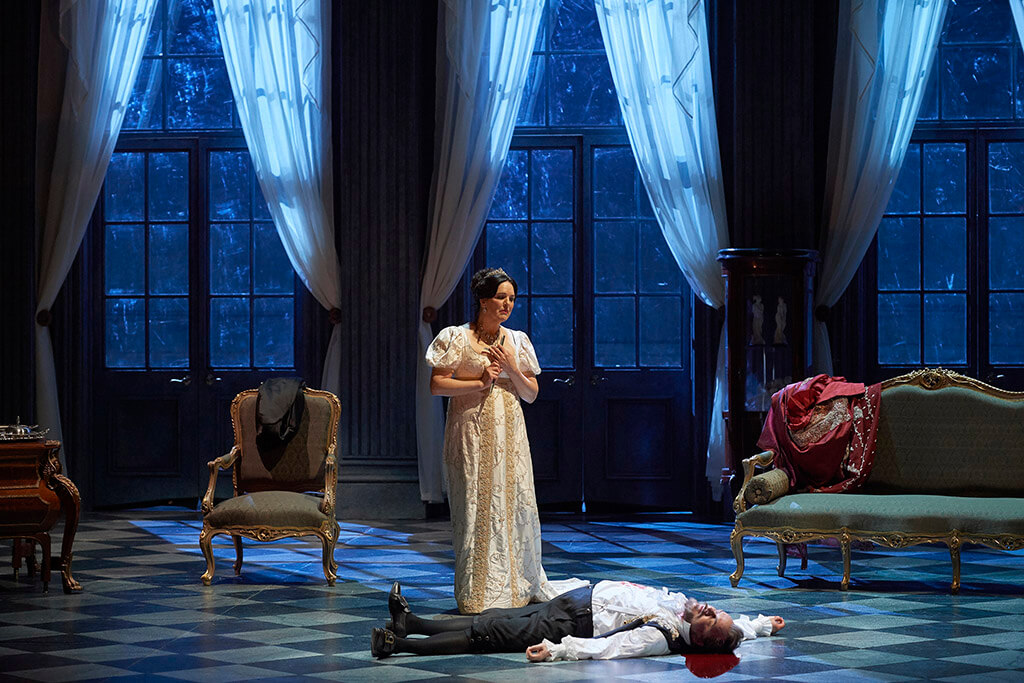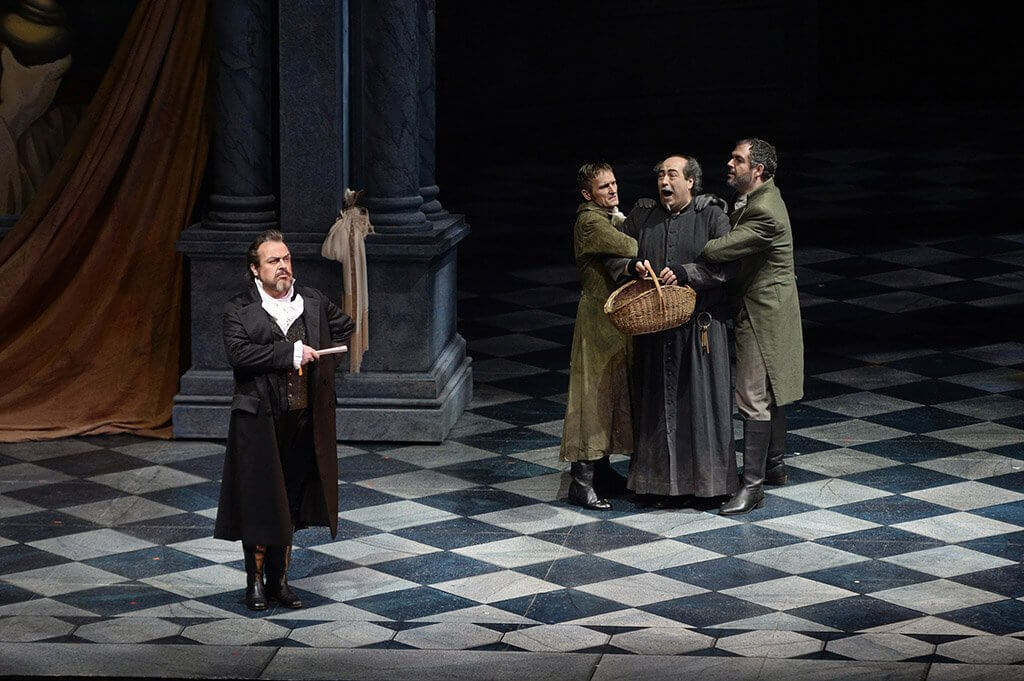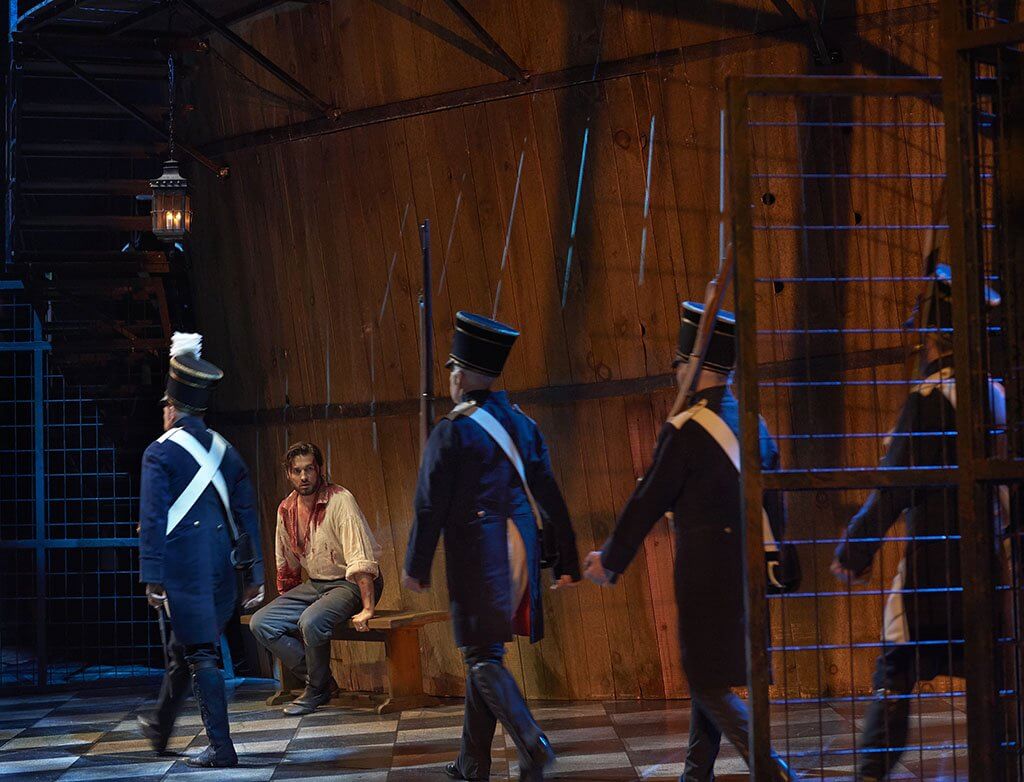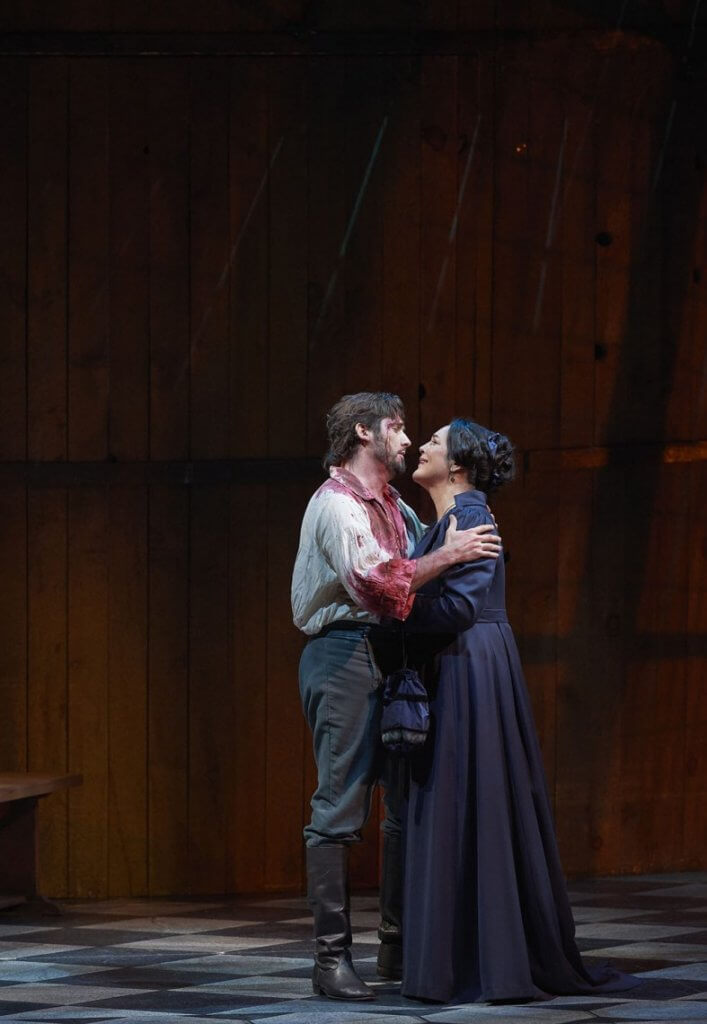
Tosca By Giacomo Puccini. Directed by Paul Curran. Until May 20 at the Four Seasons Centre for the Performing Arts. www.coc.ca
Warhorse? Potboiler? “Shabby little shocker” as coined by musicologist Joseph Kerman? Never mind! Puccini had the last laugh, as his opera has defied all the naysayers since its premiere in 1900. It remains enormously popular. A check of performance statistics of the past five seasons (2011/12 to 2015/16) shows Tosca to be the fifth most popular opera in the world out of a total of 2,658 works, with 2,694 performances from 608 productions. It’s also one of the most frequently staged works at the Canadian Opera Company, last seen only five seasons ago.
What accounts for its enduring popularity? Rather than gods and demons, Tosca represents the essence of the verismo style. It focuses on living, breathing people and their powerful emotions. It’s also dramatically taut, packing a lot of twists and turns into barely two hours of music. It also finds Giacomo Puccini at his most melodically inspired, equal to his two other masterpieces, La boheme and Madama Butterfly. And if you have a trio of great voices, a fine conductor and a terrific orchestra, Tosca remains a scintillating evening at the opera house.
And scintillating it was. Given subway issues and road closures due to a parade downtown, it wasn’t easy getting to the Four Seasons Centre. There were more than the usual latecomers and a smattering of empty seats. Those who made it were treated to a superlative performance, starring Adrianne Pieczonka in the title role. This has been a banner season for the Canadian soprano. For one thing, it’s not everyday that one gets to be on a Canadian stamp! Fresh from a triumphant run as Leonore in Fidelio at the Met, Pieczonka was in gleaming voice on the Sunday matinee, complete with five powerful high C’s. Her portrayal of the Roman diva was passionate and heart-felt, but never vulgar or over-the-top.
She was well partnered by Argentinean tenor Marcelo Puente, who sang with an attractive, bright, well-focused sound, with a fast vibrato not unlike that of Joseph Calleja. Combine that with a handsome stage presence, no wonder he’s a rising star on the international scene. At his best in Act 3, he sang a poetic, well modulated “E lucevan le stelle.” German bass-baritone Markus Marquardt, a specialist in Wagner and Strauss and whom I had heard previously in Dresden, showed off his versatility in the Italian repertoire, with an idiomatic Scarpia. Perhaps ideally one could wish for a more overpowering sound and a more menacing stage persona, but what he did do was fine.
Italian basso buffo Donato Di Stefano made a welcome return to the COC as a suitably animated Sacristan. Rather than vocal mugging, he sang it. The small roles were all ably taken, led by South African bass-baritone Musa Ngqungwana as Angelotti. Keri-Lynn Wilson made an auspicious COC debut, leading the Orchestra in an idiomatic reading of the score, offering excellent support for the singers. Finally kudos to the members of the Canadian Children’s Opera Company – what a lively bunch! Clara Moir, a member of CCOC, was a mellifluous Shepherd.
The production, built by the COC for the new house, is ultra-traditional and suitably pleasing to the eye, especially Acts One and Two. If I were to nitpick, the Rococo furnishing in Act Two (Scarpia’s apartment) is not from the Napoleonic period as dictated by the text. Act Three doesn’t quite have the right atmosphere either — the tower looked almost like the top deck of a cruise ship instead of Castel Sant’Angelo. The stage directions by Paul Curran are conventional, with just a few exceptions. Pieczonka didn’t sing “Vissi d’arte” lying prone on the stage floor a la Maria Jeritza — she’s comfortably seated on the sofa. There was no placing of the two candelabras on either side of the dead Scarpia. However, the crucifix/letter-opener turning into the murder weapon is quite a novel idea. All in all, this was an “old school” Tosca sure to please the traditionalists. With this terrific cast, it’s a fitting conclusion to an immensely satisfying COC season.






